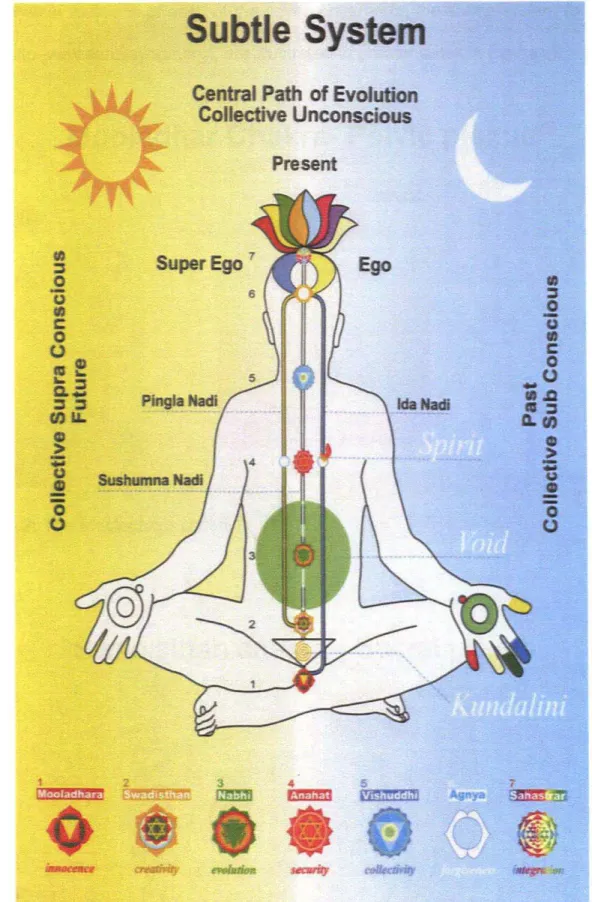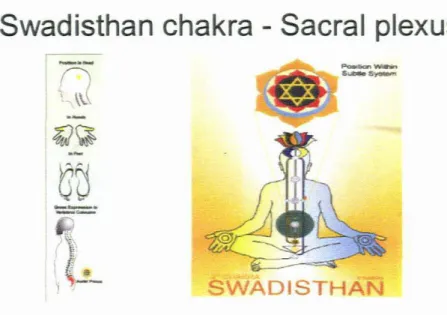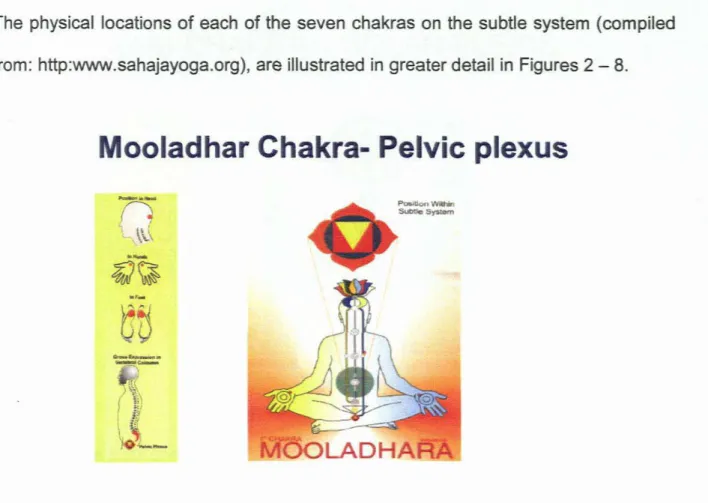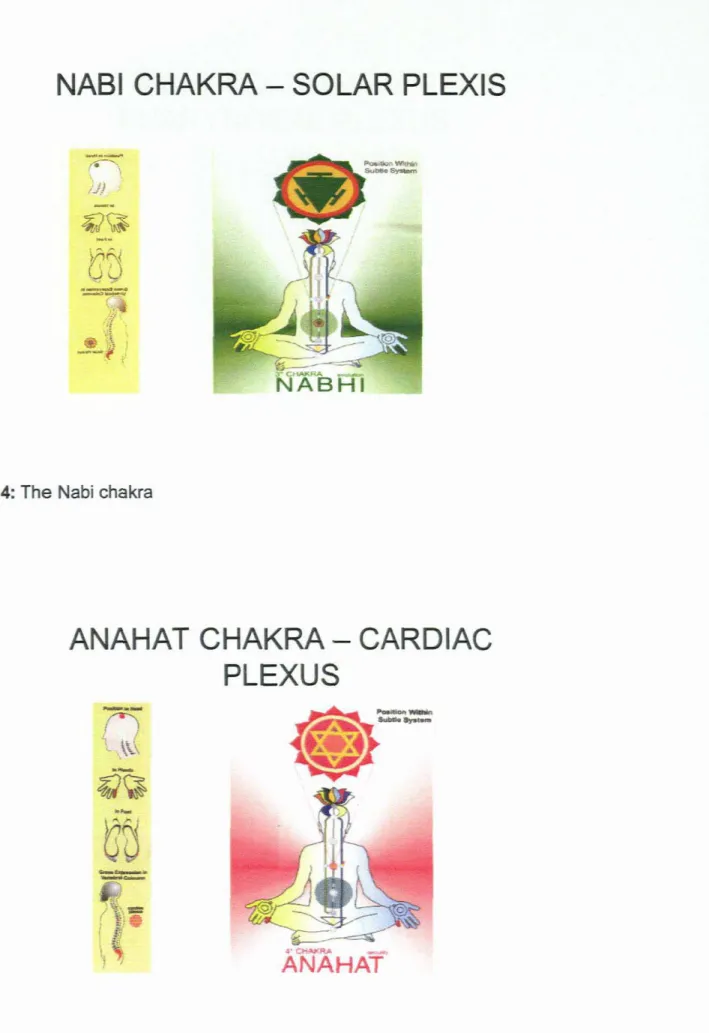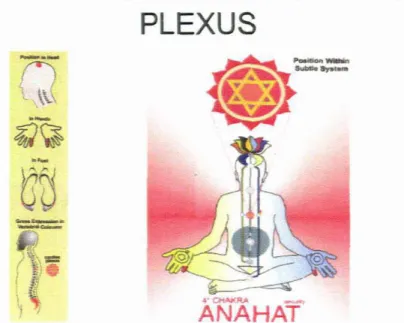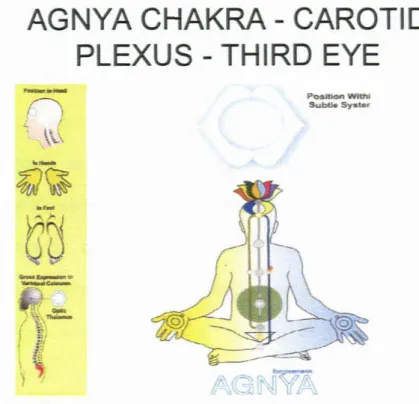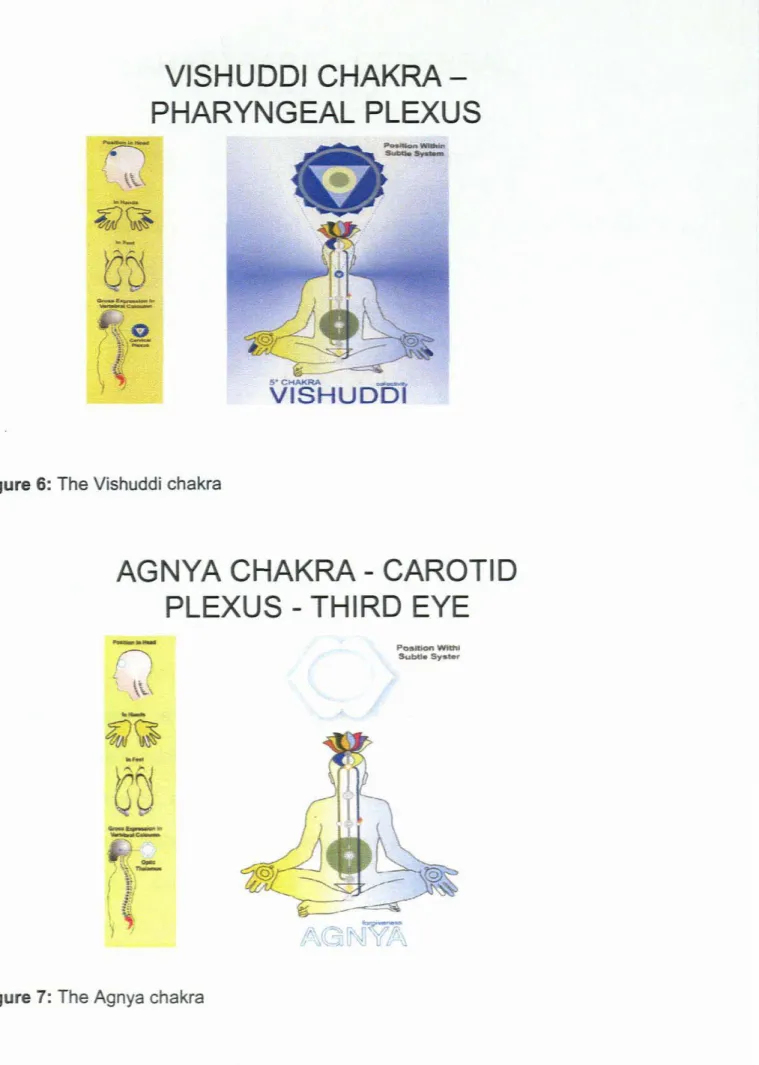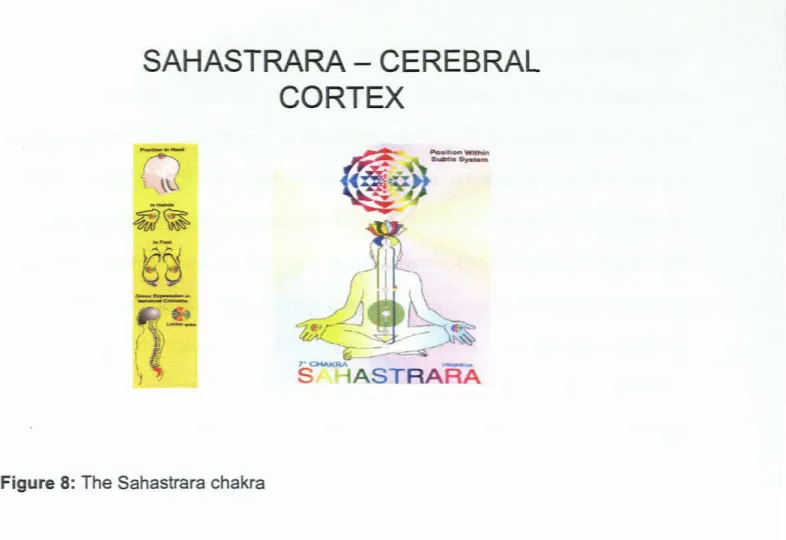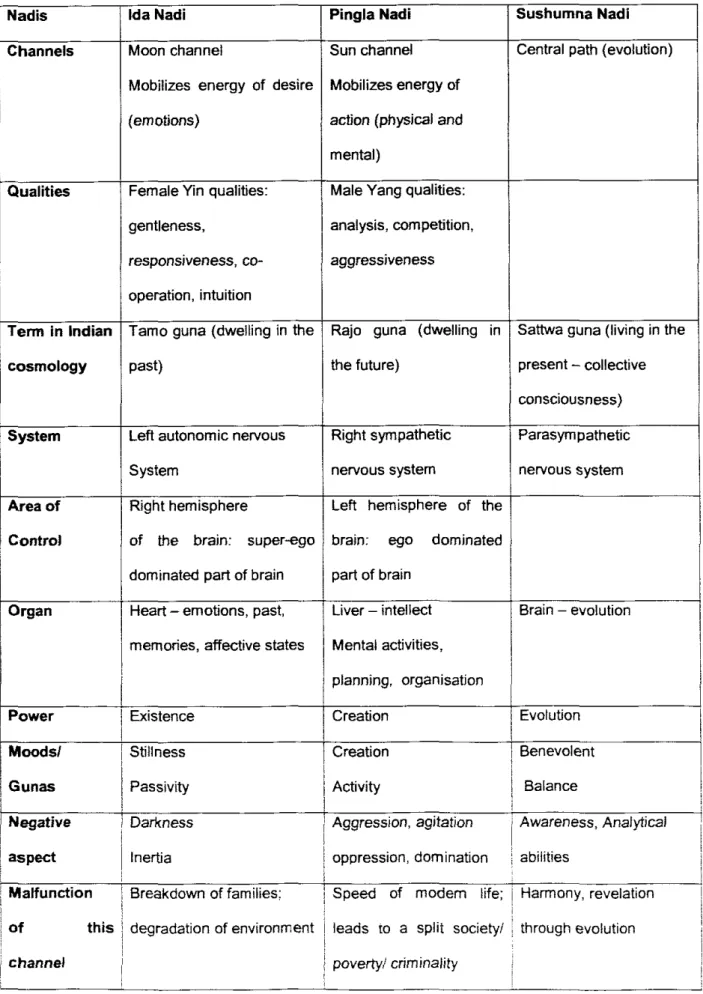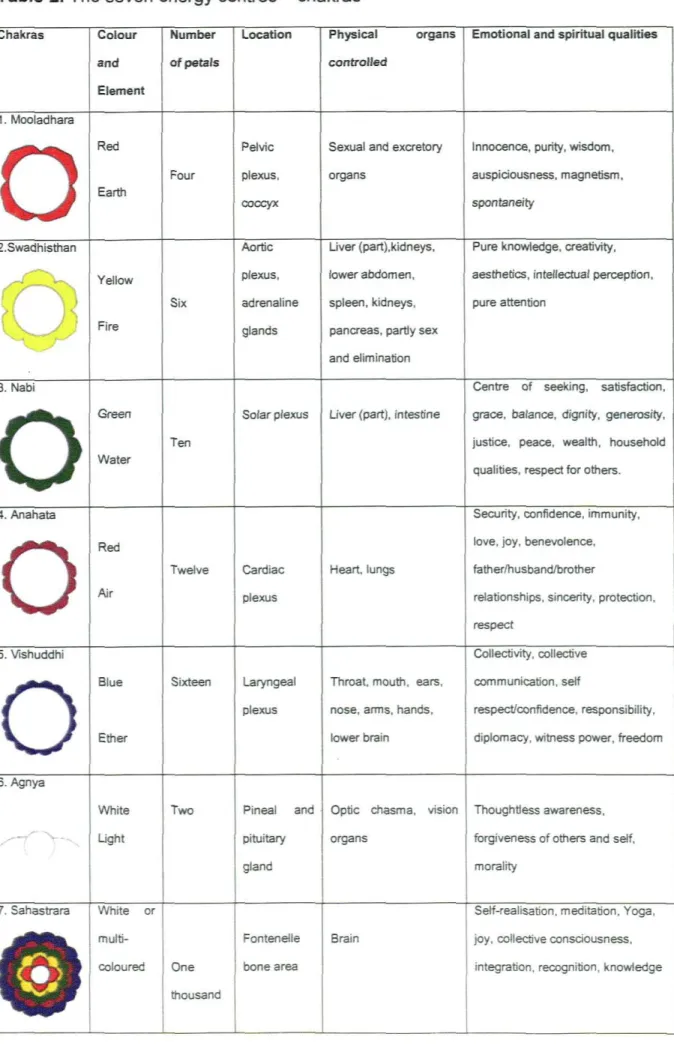Yoga, as described in this study, is Sahaja Yoga (SY), the yoga of the divine energy in man. SY meditation is practiced collectively, that is, in the company of the guru, in the presence of the guru's photograph and/or other Sahaja yogis.
Statement of the problem
SY meditation also increases potential protective factors such as job satisfaction and overall psychological health and well-being (De Kalbermatten, 2003; De Kalbermatten, 2001; Manocha, 2003; Rai, 1995; . Shrivastava, 1997). This study described the experiences of individuals who practiced SY meditation in relation to their ongoing promotion of the therapeutic community.
Research purpose
Statement of the research questions
The study in context
This method was chosen as it was congruent with the phenomenological research design of the study. Gradually, the caliber of masters degenerated and it became necessary to write down the secrets so that they would not be completely lost.
Clarification ofterminology
This study is important because it has provided empirical, experiential evidence of the value of SY in building and promoting spiritual community and communal spirituality. It leads people from the imperfect to the perfect, from the raw to the subtle, from bondage to liberation.
Thesis organisational structure
This chapter examined the research context of the study by reviewing the literature spanning the field of Sahaja Yoga meditation. The purpose of this study was to investigate Sahaja Yoga meditation as a form of therapeutic community.
Overview
Let's revisit the scene in the garden of Eden: The tree is in the middle of the garden of heaven, which was created by God for the enjoyment of his children. In his study of wholeness, Jung (1959) argued that the ultimate goal of the developmental process is Self-Realization.
Yoga
Silent meditation
Like a heavenly orchestra, we are filled with sound: the heartbeat, respiratory system, circulatory system, nervous system and brain waves all create a myriad of sounds that we can become aware of through silence. We notice nature sounds like birds chirping, the wind blowing and maybe electrical sounds like the hum of lights and refrigerators (http://WNW.anandamarga.org/learn-how-to-meditate.htm).
Mantra meditation
Yet other mantras are used to resonate and activate the chakras of the reciter (Chopra . & Simon, 2004). There are mantras associated with each of the seven energy centers in the body, known as chakras.
Types of mantras
When the Kundalini is sleeping, the individual remains in one of three states: awake, dreaming, or dreamless sleep. The science of the relationship between glands, hormones and the mind is known as bio-psychology.
Benefits of meditation
Transcendental meditation (TM)
Transcendental Meditation or TM is the trademarked name of the most common form of mantra meditation. The first step, for the duration of the course, is to abstain from murder, theft, sexual activity, false speaking, and indulging in intoxicating substances.
Sahaja Yoga meditation
Whatever the name, this all-encompassing power is responsible for doing the subtle work in the process of evolution. In this state of thoughtless awareness, one is able to ignore the constant bombardment of thoughts in the brain.
The human inner system
In the Hindu tradition, God is both male and female and projects innumerable manifestations (Avitars). In the Christian tradition, God is embodied in three forms (the Trinity of the Father, the Son and the Holy Spirit).
Self-realisation
A profound discovery embodied in the wisdom of the Vedas: Tat is Tvam, Tvam is Tat, there is no other, there is only One. Within each of us, the Tree of Life is a perfectly miniaturized replica of the Virata, the first Gestalt imprint.
Subtle System
Mooladhar Chakra- Pelvic plexus
MOOLADHARA
Swadisthan chakra - Sacral plexus
NABI CHAKRA - SOLAR PLEXIS
ANAHAT CHAKRA - CARDIAC PLEXUS
ANAHAT
VISHUDDI CHAKRA -
PHARYNGEAL PLEXUS
VISHUDDI
AGNYA CHAKRA - CAROTID PLEXUS - THIRD EYE
SAHASTRARA - CEREBRAL CORTEX
S ASTRARA
Malfunctioning of chakras
Anger represents a malfunction of the second center (svadistan chakra) and can take many forms. The Serpent Agathodaimon of Hermes Trismegistus or Mercury is a particularly explicit symbol of Kundalini. According to the Gnostics, it was an alchemical symbol of the process of psychic metamorphosis.
It connects the lowest unconscious seat of power, in the root center, (moofadhadra) with the highest center of consciousness in the crown center (Sahastrara). An experience similar to the awakening of the kundalini is an ecstasy called the bundle, which means divine influx. Kundalini-type experiences are also found in the esoteric teachings of the Egyptians, the Chinese, and some Native Americans.
Sahaja Yoga medical research
A Sahaja yogi can assist in the healing process of another Sahaja yogi who is ill and may be many miles away simply by visualizing his/her subtle system and using recommended SY techniques. SY meditation techniques, such as chanting specific mantras, ensure that one sleeps better and deeper and wakes up more rested in the morning. It allows individuals to act on the central nervous system and the state of their energy centers and energy channels (chakras).
It elevates human consciousness to a new dimension of collective consciousness and enables the individual to sense the energetic state of another person and help improve it (Rai, 1991).
Sahaja Yoga and community involvement
Similar programs are offered to people in recovery in South Africa at Chatsworth, Durban, KwaZulu-Natal, Gauteng and in the Western Cape. Low rate of crime in cities like Togliatti in Russia where Sahaja Yoga is practiced en masse, in schools and in the work environment (http://www.sahajayoga.org). An international cancer research center in Bombay studying the effects of SY meditation on cancer.
A center for poor and homeless people in Delhi to provide shelter and help them become independent through the SY meditation process (http://www.sahajayoga.org). This chapter explored the research context of the study by reviewing the literature covering the field of SY meditation. Concepts related to SY meditation were explained, field research and general benefits of SY meditation were also reviewed.
Introduction
Qualitative research provides descriptive data and enables participants to express their understandings in their own terms (Frankfort - Nachmais & Nachmais, 1996). The purpose of the "descriptive" approach is to investigate what and how something is, rather than why (Karlsson, 1993). This changing reality includes the consciousness of the phenomenologist as well as the phenomena revealed to consciousness.
The approach is subjective in the degree to which it is concerned with the lived world as it appears to the phenomenologist. It is objective to the extent that the phenomena are accurately interpreted by the phenomenologist and the truth of their reality is intersubjectively agreed upon by other phenomenologists (Edwards, 2006; Giorgi, 1990). The epistemological position taken in this study can be stated as follows: a) the data is within the perspectives of the practitioners of SY meditation, and (b) for this reason the researcher has collaborated with Sahaja yogis in collecting of the data.
Pilot study
Target and accessible population
Sampling procedure
- Research sample
- Participant profile
In this study, the in-depth interview was used as a data collection technique to obtain participants' descriptions of their SY meditation experiences. I presented myself to the participants as a caring person who was easy to get along with and easy to talk to, so our interaction was mutually pleasant and fulfilling. I emphasized the importance of the participants' cooperation in the study being valuable and beneficial, not only to themselves, but also that by participating they played an integral role in creating international awareness of SY meditation as a therapeutic community.
I explained the purpose of the study, the method of selecting participants and the confidential nature of the interview to the participants in a relaxed and friendly way to motivate the participants and overcome barriers to the interview. Audio tapes were used during interviews, as extensive note-taking risks distracting the participant and interrupting the flow of the interview (Barker, Pistrang & Elliot, 1996). Other advantages of tape recording are that: By preserving the participant's words, researchers have their original data, and if something is not clear in a transcription, the researcher can go back to the source and check for accuracy.
Data-storing methods
- Interviews
Explication of data
Bracketing and phenomenological reduction
Delineating units of meaning
The explaining process began with repeated listening to the audio recording of each interview to become familiar with the words of the interviewee and to develop a holistic sense, the 'gestalt' (Holloway, 1997; Hycner, 1999). This process involved going back to the recorded interview (the Gestalt) and then to the list of non-redundant units of meaning to derive clusters of appropriate meaning. By questioning the meaning of the different clusters, central themes were determined (Appendix A: 7; Appendix B: 7), which expressed "the essence of these clusters" (Hycner.
In phenomenological analysis, the goal of the researcher is to reconstruct the subject's inner world of experience. By including all the themes that emerged from the data in the research, I summarized each interview to present a holistic context (Appendix A: . 3; Appendix B: 3). At this point I performed a 'validity check' by returning the summary of the interview to the participant, to determine whether the essence of the interview had been correctly 'captured' (Hycner.
Extracting general themes from all the interviews and making a composite summary
- Research quality
- Prolonged engagement
- Member checking
- Peer evaluation
- Transferability
- Introduction
- Overview
- Common themes
- Discussion
- Theme 2: Meditation
- Resume'
- Introduction
- The Employment Sector
- Implications for future research
- Conclusion
- REFERENCES
- GLOSSARY
- Personal data
- Academic and professional qualifications
- Participant Information PARTICIPANT PILOT STUDY
- Summary of participants’ SY experiences
- Recording experiences Sheila’s experiences
- Identifying main themes in summaries
- Paula’s experiences
- Descriptors used to identify the main themes Themes Descriptors
- Frequency table reflecting common themes in the pilot study
- Confirmation of correctness (member checking)
- Confirmation of correctness (peer)
In the previous chapter, a detailed explanation of the entire process involved in conducting this research was explained. The witness is the metal guide, an invaluable friend, the deep inner consciousness of the Self. In fact, Kundalini is the Shakti of god and everything can be achieved through it.
There are Siddha mantras associated with each of the seven energy centers in the body. SHE is an adventurous journey in discovering the wider, deeper more rewarding dimensions of human awareness. They are brought to the surface and eliminated by the action of the awakened Kundalini energy.
In the Bhagavad Gita it is called the trunk of the tree of life. Being in the presence of the Guru, Shri Mataji Nirmala Devi, looking at the photo of Shri Mataji.
